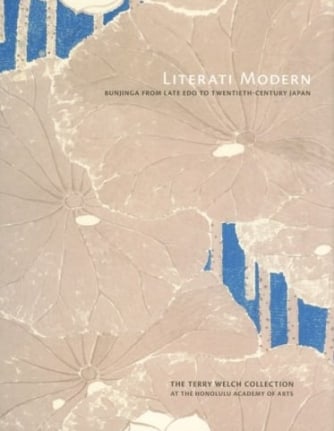Literati painting, or bunjinga, introduced from China in the early eighteenth century, flourished in Japan's artistic communities. Even after Western culture began to eclipse Chinese influences with the opening of the Meiji era in 1868, Japanese scholar-painters continued to thrive under strong patronage from government officials. A new generation of artists during the Taishō and early Shōwa eras revitalized the ltierati movement in the twentieth century. This "new" literati painting, or shin nanga, revived and continued the concept of the scholar-amateur artist in the context of modern expressionism and individualism.
Although an area of serious Japanese scholarship in recent years, the literati phenomenon has been little examined in the West. Literati Modern: Bunjinga from Late Edo to Twentieth-Century Japan introduces to the pulic for the first time an important collection of literati and shin nanga artworks.
Formed by noted garden designer Terry Welch, the collection-recently acquired by the Honolulu Academy of Arts- offers outstanding examples of paintings, calligraphy, and ceramics. In this volume, eighty-three select objects are beautifully illustrated and examined. Translations of inscriptions and poems, detailed artist biographies, and photographic documentation of seals and signatures are also provided. In addition, essays by scholars Paul Berry and Michiyo Morioka consider the relationship between Chinese and Japanese painters in the nineteenth century, the transformation of literati tradition in modern-era Japanese painting, and the types and significance of seals in literati painting. Throughout, the striking diversity of individual expressions that underlies the bunjinga movement shines through. The volume is a major contribution to the field of Japanese art.

